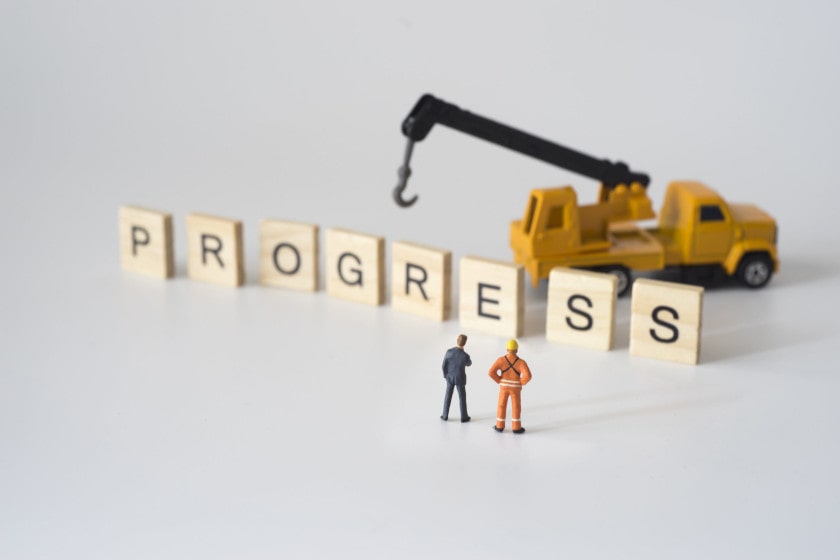How To Conduct Annual Reviews At Your Construction Company

Annual reviews are a tried and true management tool that helps everyone understand their performance or where there is room for improvement. These guidelines will show you how to design an annual review process for your construction company.
Once you have considered all of the questions and points you want to cover in your annual reviews, we recommend using digital construction forms to keep that information accessible and stored digitally without needing to be entered manually. This will make it easier to look back on previous years’ data. Choosing the right construction form builder will help to keep the process organized.
Annual Reviews for Construction Employees: What’s In It for Them?
If you are introducing an annual review process or overhauling your approach, your employees may wonder why you are doing this. It’s a reasonable concern that you can easily address. There are three main reasons:
- Recognize success. In our fast-paced world, you may forget to notice when people do good work. The annual review is one place where managers can recognize excellence.
- Discuss career goals. During an annual review, managers and employees both discuss the employee’s career goals. This discussion often informs training and education planning for the next year.
- Designate areas for improvement. Everyone has blind spots and problems they are not taking action on. An annual review is one good venue for identifying and taking action on these points so you can achieve even better results.
The Guiding Principle for Your Annual Review Form: Use a Balanced Scorecard
Use a balanced scorecard approach to guide your annual review process. This approach ensures that you do not miss anything important. The following four categories will give you a basis to develop your annual review form.
For the best results, customize the list based on your company’s goals. Our focus is looking for ways to recognize where your employees have done a great job. On the other hand, if you cannot find evidence of success, that fact needs to be recorded as well.
To get you started, use the following categories to build your annual review form:
1. Construction Safety
In construction, death, injury and damage are constant concerns. It’s important to include a discussion on safety practices as part of your annual review. If an employee has earned a safety certification, note that achievement. If the employee has improved safety checklists, note that as well. On the other hand, if the employee has been negligent on safety matters, that fact must be considered.
Key questions for your annual review form:
- What are specific ways this employee has contributed to the company’s safety requirements and expectations?
- For management employees: what safety promotion measures and activities has the employee carried out with their direct reports?
2. Customer Satisfaction
Without satisfied customers, no construction company will be able to survive for long. This annual review category usually includes a mix of numeric measures and general comments. For example, you may send a quarterly customer satisfaction survey to your customers. If so, note those results on the annual review. In addition, customer complaints and thank you notes may be considered in this section.
Key questions to ask:
- How has the employee performed against the company’s customer service standards (e.g. attendance at all customer meetings, timely responses to questions)?
- How has the employee responded to and resolved complaints and questions from customers?
3. Major Projects
Outside of specific construction sites, your company may ask employees to contribute to special projects. This might include contributing to a sales presentation, assisting in training new hires and supporting the roll out of new IT systems.
Employee contributions to these projects help the company become successful in the long run. Therefore, take the time to recognize those contributions in the performance review.
Key questions to ask:
- Which major construction company projects has the employee contributed to? What was the impact of their contributions?
- What projects is the employee interested in contributing to next year?
Tip: When possible, ask employees to become involved in projects that fit their career goals. If an employee is interested in moving into management, involving them in people matters such as hiring and training makes sense.
4. Individual Growth and Training
Above and beyond immediate rewards, keep one eye on long term performance. For example, consider a construction supervisor in your company. What growth experiences did they complete this year that you can consider in their annual review?
As construction employees become more skilled and highly trained, they are more likely to stay with your company and become even more productive.
Key questions for your annual review form:
- What training courses, certifications and related development activities did the employee complete this year?
- How has the employee’s training efforts contributed to their other goals (e.g. improved safety procedures after taking a construction safety course)?
Putting Your Annual Review Into Action
With the right approach, nothing in the annual review should come as a surprise to your employees. If you are launching a new annual review process, discuss your approach in advance of putting it into action. You wouldn’t want your boss to surprise you at your annual review, so show the same courtesy to your employees.
Mobile forms can help with more than just annual reviews. See what else is possible with mobile forms for construction.